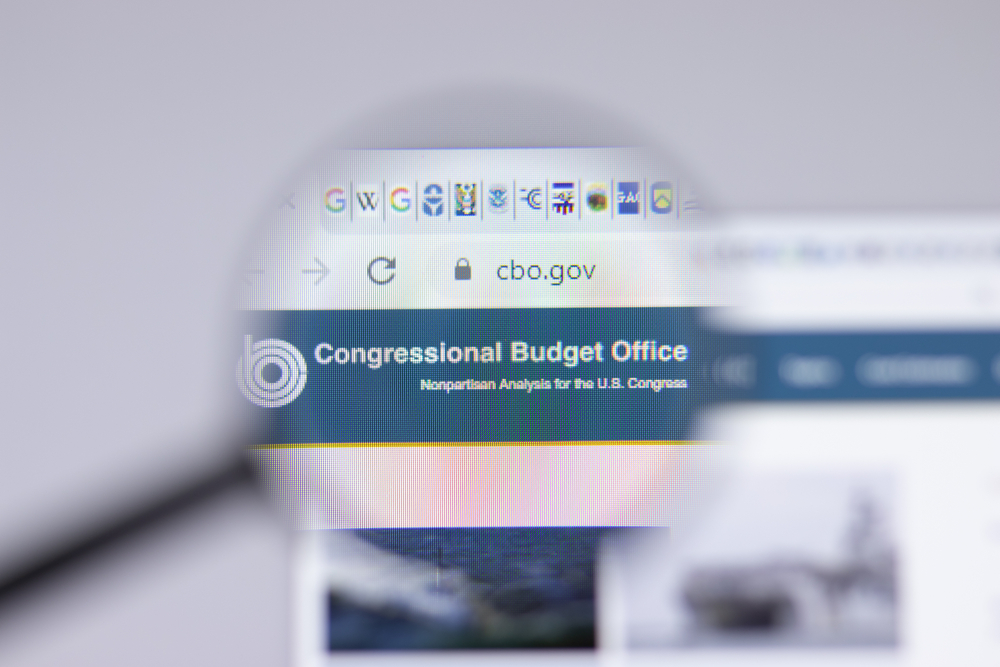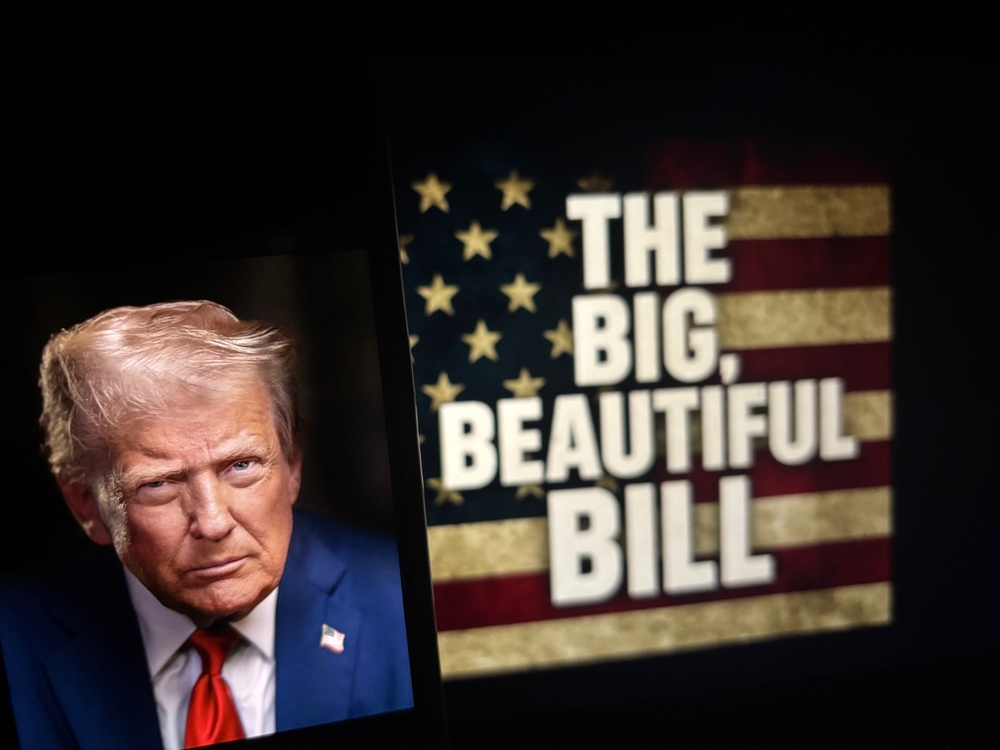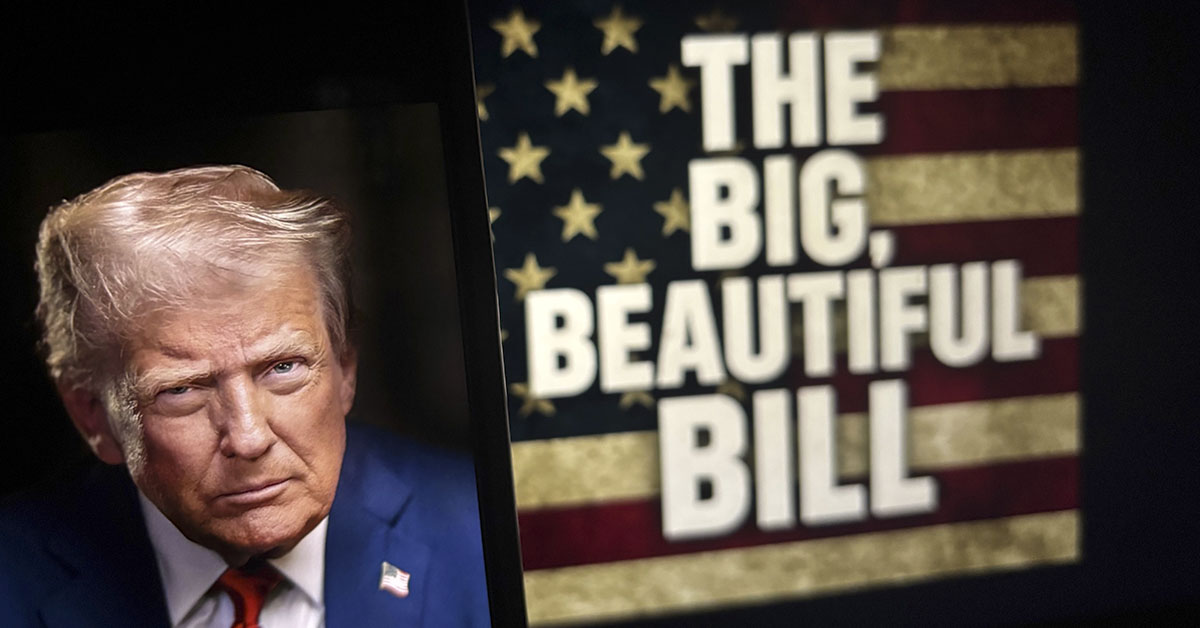On July 4, 2025, President Donald Trump signed Trump’s ‘Big Beautiful Bill’ into law, making Independence Day one of the most consequential political moments in recent memory. The bill, officially named the One Big Beautiful Bill Act, is a sweeping overhaul of U.S. tax, welfare, and immigration policies. Supporters describe it as a restoration of American strength and fiscal responsibility. Critics argue it deepens inequality and puts essential services at risk. From tax cuts and spending reform to military surges and benefit reductions, the legislation impacts nearly every aspect of American life. In this slideshow, we break down what’s included and what it means for you.
Tax Cuts Made Permanent

The American Strength Act of 2025 cements tax cuts from Trump’s 2017 reforms into permanent law. It lowers income tax brackets, boosts the standard deduction, and raises the SALT (state and local tax) deduction cap to $40,000, though that amount will phase down gradually. Additionally, new deductions are now available for overtime pay, tip income, and interest on U.S.-assembled vehicle loans. Supporters say these policies deliver meaningful tax relief to working families and boost domestic spending. Critics warn that they mostly benefit higher earners and may significantly increase the federal deficit. Still, these measures are now locked in for the long term.
Read More: Queen of Netherlands Appears to Mock Donald Trump on Live TV
Cuts to Medicaid and SNAP

Trump’s ‘Big Beautiful Bill’ significantly reduces federal support for Medicaid and the Supplemental Nutrition Assistance Program (SNAP). It enforces stricter work requirements, requires more frequent eligibility checks, and transfers more costs to individual states. As a result, millions of low-income families, seniors, and people with disabilities may lose access to essential benefits. Proponents argue these changes promote self-sufficiency and curb government spending. Opponents counter that this form of spending reform will increase poverty and strain state budgets. Either way, this marks a dramatic shift in how social welfare is handled nationwide.
Student Loan Reforms

Under the One Big Beautiful Bill Act, federal student loan policies undergo major changes. The bill caps how much students can borrow, eliminates several income-based repayment plans, and shortens the grace period before repayment begins. Supporters claim this will reduce overall student debt and encourage more cost-effective degree choices. Critics argue it limits access to education and puts greater financial pressure on recent graduates, especially those from low-income families. While this is framed as a budget-saving measure, the real cost may be felt by the next generation of students.
Read More: Nobel Peace Prize Nomination for Trump Amid Israel-Iran Truce Efforts
New “Trump Account” for Kids

One of the bill’s more family-focused elements is the introduction of the “Trump Account.” This tax-free savings account allows parents to invest in their children’s futures by saving for education, healthcare, or a first home. The account offers more flexibility than traditional 529 plans. Supporters say it encourages long-term planning and helps families build intergenerational wealth. However, critics note that wealthier families are more likely to benefit, as they are the ones with money to save. Nonetheless, the American Strength Act of 2025 positions this feature as a way to empower parents and reward financial responsibility.
Military Spending Surge

Another major component of Trump’s ‘Big Beautiful Bill’ is a massive boost to the U.S. military. The bill allocates an additional $150 billion for defense. This includes funding for weapons modernization, new recruitment initiatives, and expanded benefits for veterans. Supporters call this a necessary investment in national security. Meanwhile, critics argue it comes at the expense of domestic programs such as education and public health. This surge underscores the administration’s commitment to prioritizing military strength and global presence over domestic spending.
Massive Border Security Expansion

Border enforcement also receives a major investment under the Big Beautiful Bill. The legislation provides $150 billion to hire more ICE agents, expand detention facilities, install surveillance technology, and complete portions of the U.S.-Mexico border wall. The administration says this is essential for restoring law and order. Supporters believe it will reduce illegal immigration and drug trafficking. On the other hand, critics voice concerns about civil liberties, due process, and the humanitarian impact of these policies. Regardless, this move is one of the most significant shifts in immigration enforcement in decades.
Read More: Trump Announces Sweeping Travel Bans and Restrictions on 19 Countries
Rollback of Environmental Protections

The One Big Beautiful Bill Act also rolls back key environmental protections. It ends clean energy tax credits, cancels parts of the Inflation Reduction Act, and cuts funding to agencies like the Bureau of Land Management and the Consumer Financial Protection Bureau. Supporters claim these rollbacks reduce regulatory burdens and lower energy costs. Environmental groups warn that the changes stall progress on climate goals and damage renewable energy industries. While the rollback may offer short-term savings, it raises long-term questions about environmental responsibility.
Debt Ceiling Lifted

To fund these widespread changes, Trump’s ‘Big Beautiful Bill’ increases the federal debt ceiling by up to $5 trillion. This move avoids a government default and keeps federal programs running. However, the Congressional Budget Office estimates the bill will add at least $2.4 trillion to the deficit over the next decade. Supporters argue the spending is justified by the economic gains expected from tax relief and national security investments. Critics contend that the added debt could burden future generations and undermine fiscal stability. Either way, this measure ensures the administration can implement its full agenda without immediate financial roadblocks.
Support for Rural Hospitals

In addition to major reforms, the bill includes targeted support and new revenue streams. First, it allocates $50 billion to help stabilize rural hospitals, many of which are on the brink of closure. At the same time, Medicaid provider taxes are phased out, shifting more healthcare costs to states. Similarly, a portion of SNAP funding will now come from state budgets, adding pressure to already tight local resources.
Other Key Additions

The legislation also earmarks $40 million for the creation of the “National Garden of American Heroes,” a project championed by Trump to honor influential historical figures. To help offset spending, the bill introduces new fees for asylum processing, taxes on large college endowments, and stricter IRS enforcement provisions. These measures aim to generate additional revenue while reinforcing the administration’s cultural and fiscal priorities.
Impact and Projections

Looking ahead, experts forecast a mixed economic and social outlook under the American Strength Act of 2025. The Congressional Budget Office projects a sharp rise in the national debt. Millions may lose access to benefits such as healthcare and food assistance due to cost shifts and eligibility changes. However, job growth is expected in defense and security sectors. Tax cuts could boost consumer spending among middle- and upper-income households. At the same time, environmental setbacks may slow progress on clean energy, and college access could narrow for low-income students. In short, while some Americans may benefit from these reforms, others may face new and serious challenges.
Closing Thoughts

There is no doubt that Trump’s ‘Big Beautiful Bill’ is a landmark piece of legislation. It reshapes everything from taxation and immigration to social welfare and education. Supporters call it a bold step toward restoring order and opportunity. Critics see it as a rollback of protections that help the most vulnerable. What’s clear is that the Big Beautiful Bill has fundamentally altered the direction of federal policy. Whether history views it as a breakthrough or a step backward remains to be seen.
Read More: Trump Threatens to Deport Musk as Their Feud Heats Up

